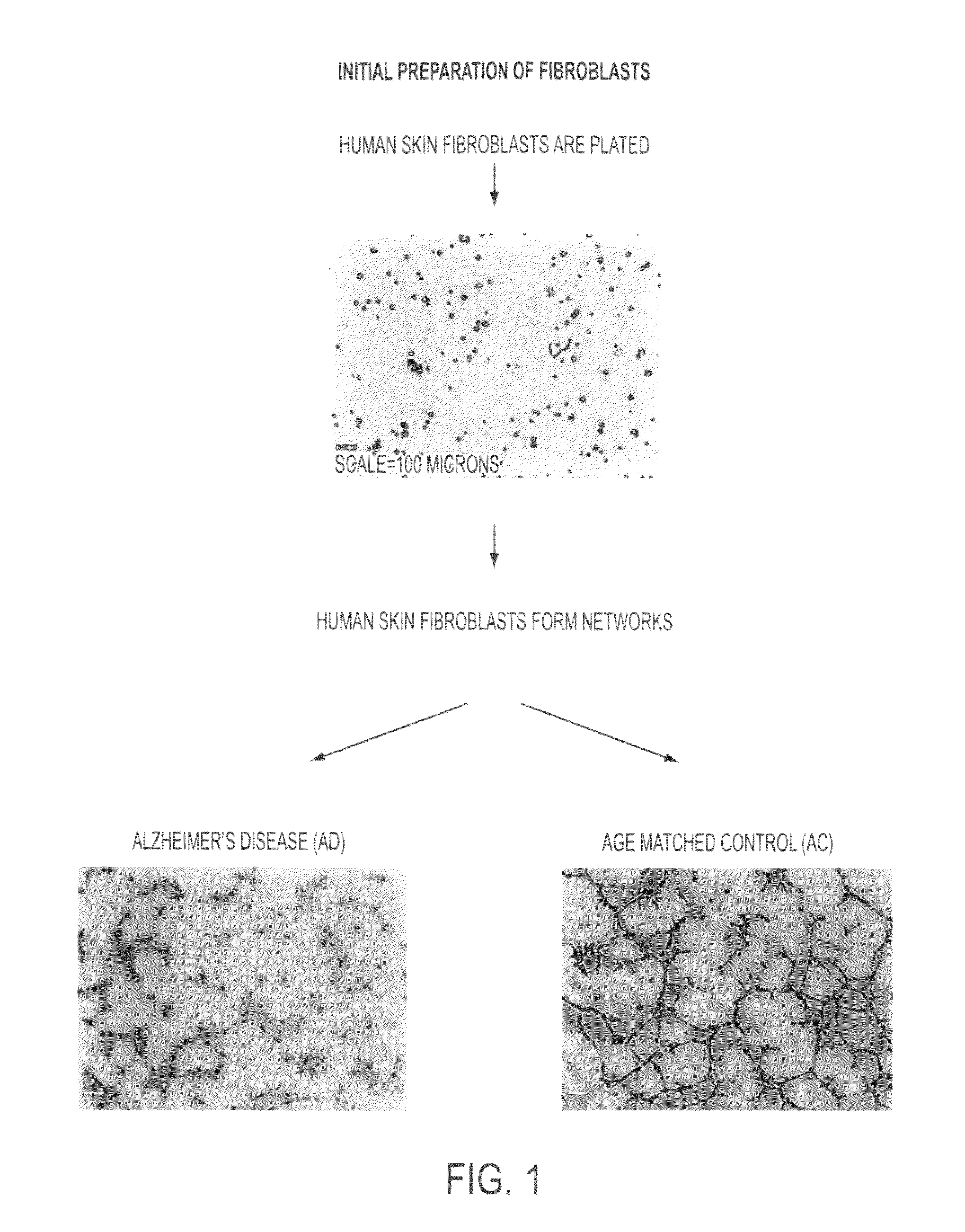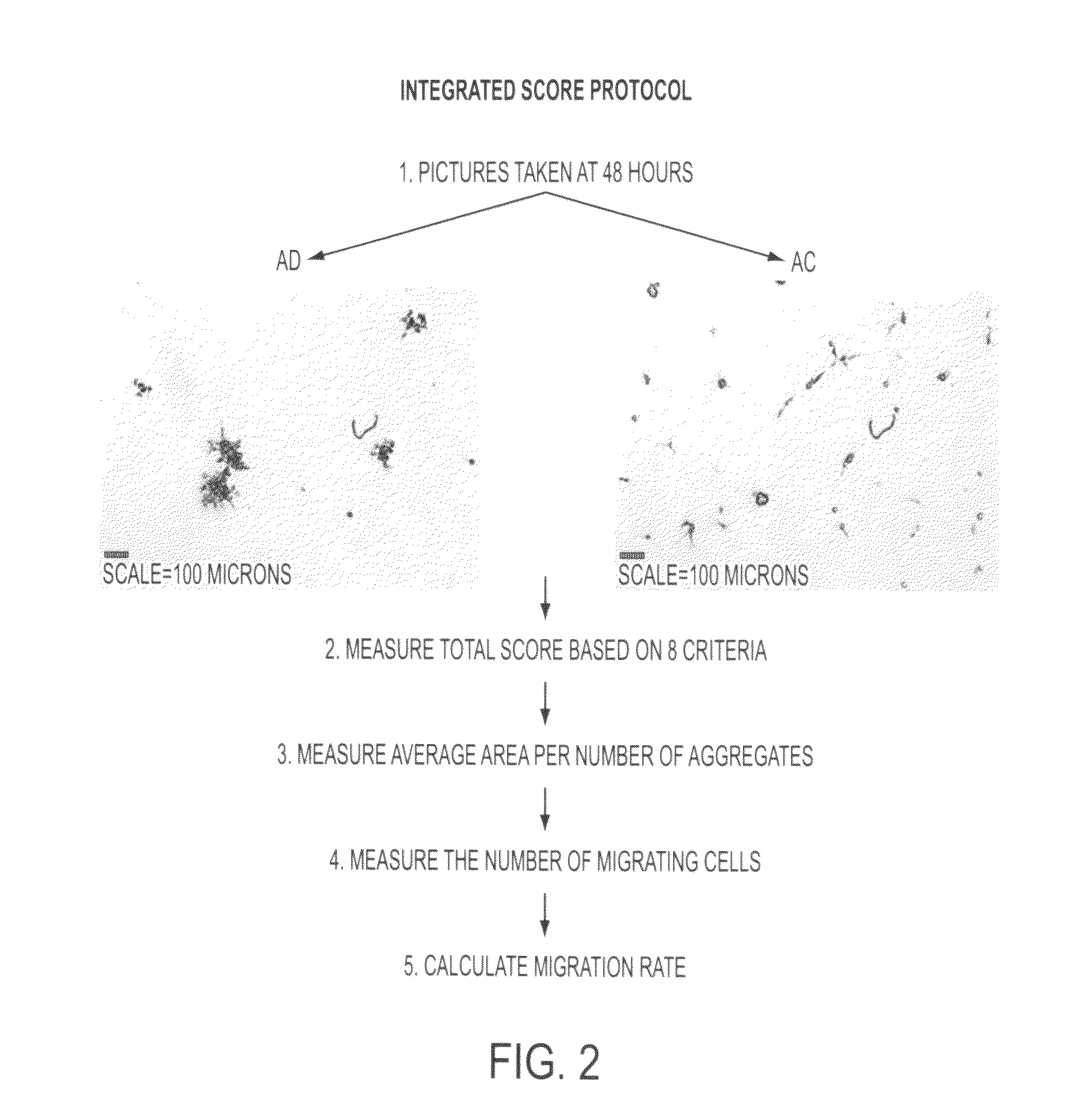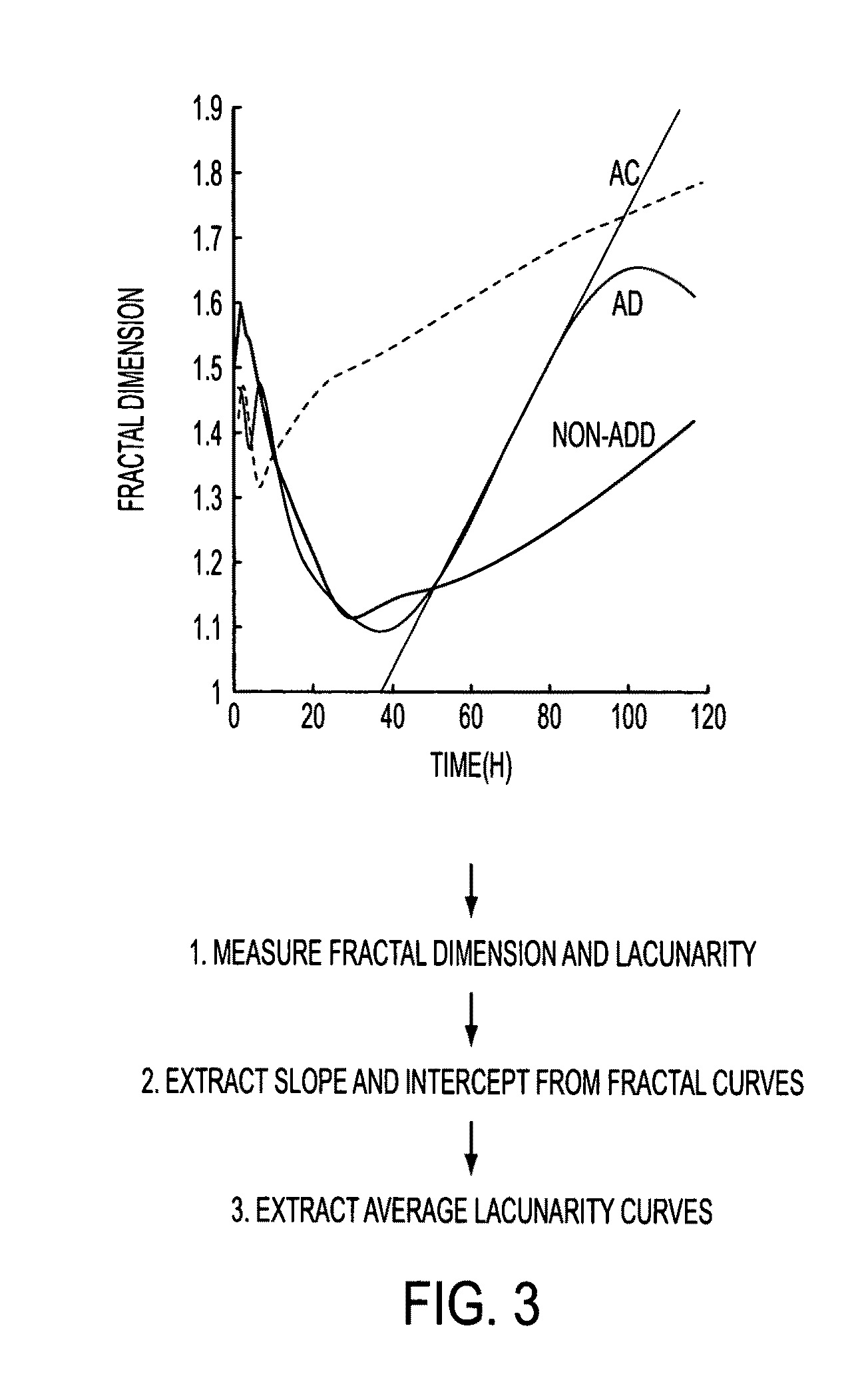Fibroblast growth patterns for diagnosis of Alzheimer's disease
a technology of fibroblasts and growth patterns, applied in the field of methods to diagnose alzheimer's disease using fibroblast growth patterns, can solve problems such as memory loss, thinking and behavior, and reducing quality of li
- Summary
- Abstract
- Description
- Claims
- Application Information
AI Technical Summary
Benefits of technology
Problems solved by technology
Method used
Image
Examples
example 1
Coating the 12 Well Plates with BD Matrigel Matrix Growth Factor Reduced
[0161]Equipment and Materials: Class II A / B 3 biological safety cabinet (Form a Scientific). CO2 water jacket incubator (Form a Scientific). Inverted microscope. Pasteur pipettes. Serological pipettes. Pipette aids (Omega Cat. No. P5017). BD Matrigel Matrix Growth Factor Reduced (BD Biosciences, Cat. No, 354230), (Aliquot 800 μl and store at −20° C.). Sterile 12 well culture plates (Corning Inc., Cat. No. 3512)
[0162]Procedure: Thaw BD Matrigel Matrix Growth Factor Reduced at 4° C. on ice 30 min. before use, and use pre-cooled pipettes, tips, and 12 well culture plates. Make sure Matrigel is liquid and has no solid aggregates.
[0163]Thick Gel Method: Using cooled pipettes, mix the BD Matrigel Matrix Growth Factor Reduced to homogeneity. Keep 12 well culture plates on ice 30 min. prior to use and during the adding of BD Matrigel Matrix Growth Factor Reduced, 700 μL per well. Verify the homogeneity of the gel on the...
example 2
Preparing of Human Skin Fibroblast for Plating
[0164]Equipment and Materials: Class II A / B 3 biological safety cabinet (Form a Scientific). CO2 water-jacket incubator (Form a Scientific). Inverted microscope. T-E (Trypsin-EDTA solution 1×) (stored at −20 C). M-2 (Medium-2) DMEM with 10% FBS, and 1% PS. Pasteur pipettes. Serological pipettes. Pipette aids (Omega Cat. No. P5017). Culture flask, vent cap, 25 cm2. 15 ml and 50 ml sterile plastic tube. 500 ml Bottle Top Filter. Water bath Centrifuge.
[0165]Procedure: Thaw and warm T-E and M-2 medium at 37° C. in the water bath.
[0166]Flask cultures containing tissue fragments: Remove and discard culture medium from flask by suction. To eliminate serum residue that could inactivate trypsin, add 2 ml T-E and suck out immediately. Add 2 ml of T-E to flask and incubate at 37° C. for 3-5 minutes. Time of detachment of cells from the surface of culture flasks is not the same for all patients and needs to be adjusted for each case in the range 3-5...
example 3
Counting of Human Skin Fibroblasts
[0167]Equipment and Materials: Class II A / B 3 biological safety cabinet (Fauna Scientific). Inverted microscope. Cell counting chamber-Levy Double (VWR scientific, Cat. No. 15170-208). Pasteur pipettes. Serological pipettes. Pipette aids (Omega Cat. No. P5017). Sterile 12 well culture plates (Corning Inc., Cat. No. 3512)
[0168]Procedure: Add 0.25 ml of cell suspension into the cell counting chamber and put the cover glass on the top.
[0169]Cell counting chamber-Levy Double containing fibroblast cells: Let the cell stabilize and then count the number of cells in the nine big squares under the inverted microscope. The average number of cells (AvC), multiplied by 10, gives the density of cells (DC) expressed in number of cells / mm3. Dilute the cell suspension with M-2 medium to reach the density of 50 cells / mm3 in a total volume of 1.5 ml. Use (1.5 ml)×(50) / AvC for the cell suspension and complete the rest up to 1.5 ml with M-2 medium. Three wells are use...
PUM
| Property | Measurement | Unit |
|---|---|---|
| thickness | aaaaa | aaaaa |
| volume | aaaaa | aaaaa |
| volumes | aaaaa | aaaaa |
Abstract
Description
Claims
Application Information
 Login to View More
Login to View More - R&D
- Intellectual Property
- Life Sciences
- Materials
- Tech Scout
- Unparalleled Data Quality
- Higher Quality Content
- 60% Fewer Hallucinations
Browse by: Latest US Patents, China's latest patents, Technical Efficacy Thesaurus, Application Domain, Technology Topic, Popular Technical Reports.
© 2025 PatSnap. All rights reserved.Legal|Privacy policy|Modern Slavery Act Transparency Statement|Sitemap|About US| Contact US: help@patsnap.com



